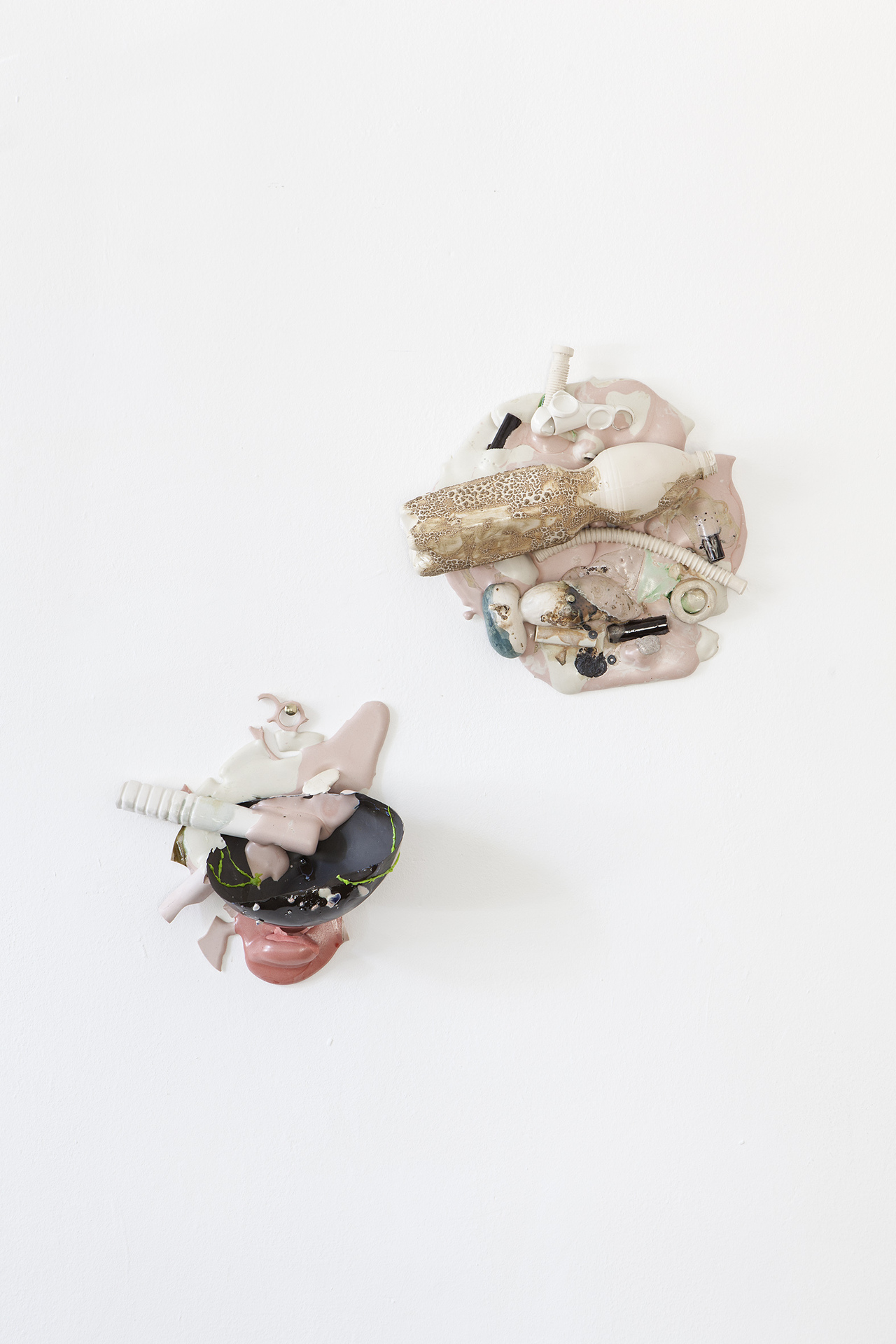Archive
2020
KubaParis
Pyro Bodies













Location
New JörgDate
02.09 –10.09.2020Curator
as a contribution to the independent exhibition-programme Pappenheimgasse 37Photography
Janine SchranzSubheadline
A series using mycelium and ceramicsText
The sculptural series Pyro Bodies has been inspired by findings of pyroplastic pebbles on a beach in Milos, Greece, in 2019. Plastiglomerates or pyroplastics are amalgams of natural debris and burnt plastic waste, of human origin. Eroded by the elements pyroplastics get a stone like appearance, like something geological.
This process of formation brings up questions about authorship and agency. Agency cannot be reduced to single entities, no matter if human or non-human, but it can be interpreted through networked interactions of human and non-human actors and actants.
In analogy to the formation of pyroplastics stoneware, earthenware, glass, stones or metal are melted together into material-semiotic composites.
The mycelium objects, preserved by heat after processes of nurturing and growth, explore the same questions concerning authorship and agency and ask in what way material-semiotic interactions influence our morality, ethics and politics, since mycelium is seen as a sustainable substitute for plastics. Pyro Bodies is also a speculation about what could possibly be found on future beaches.
Kristin Weissenberger